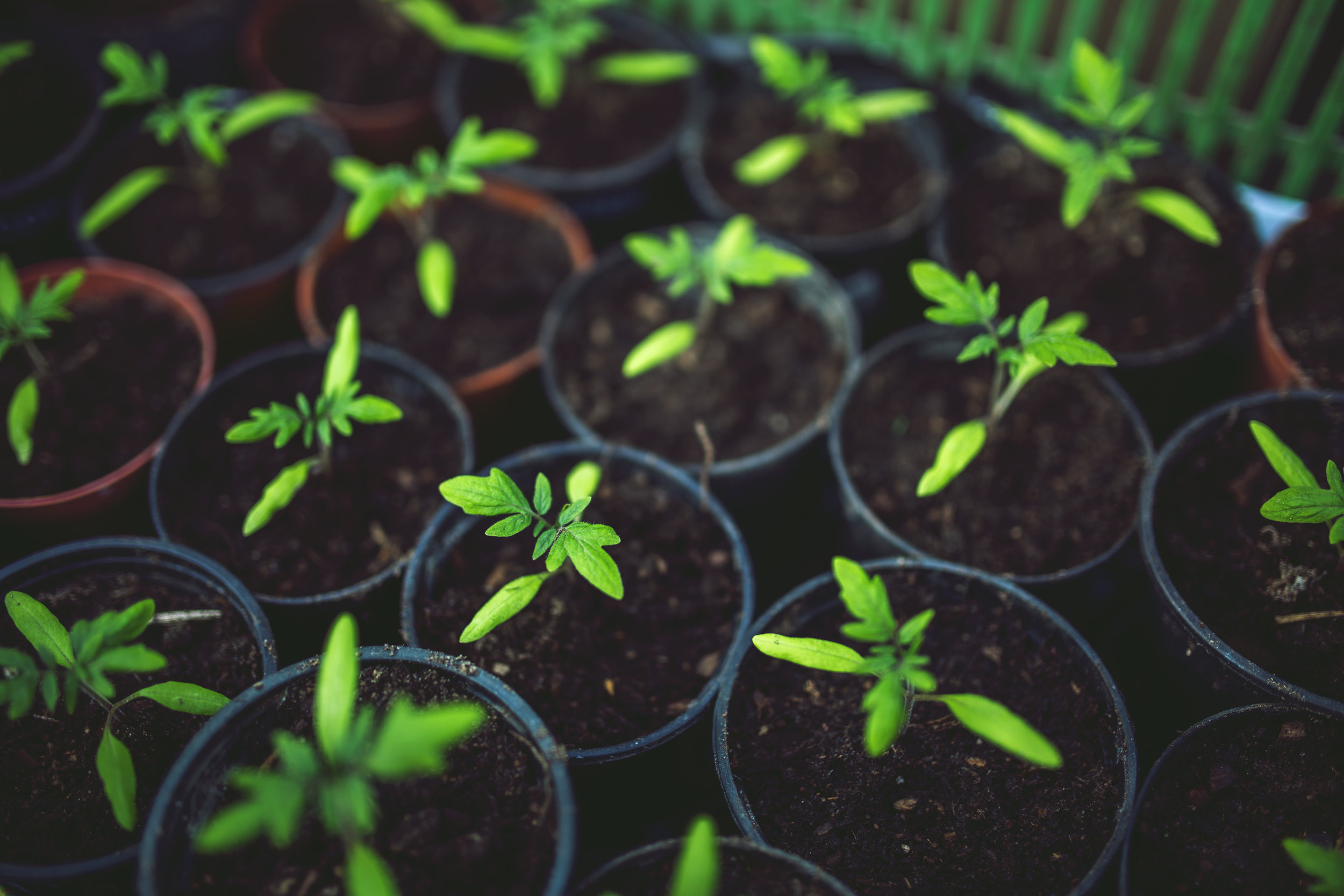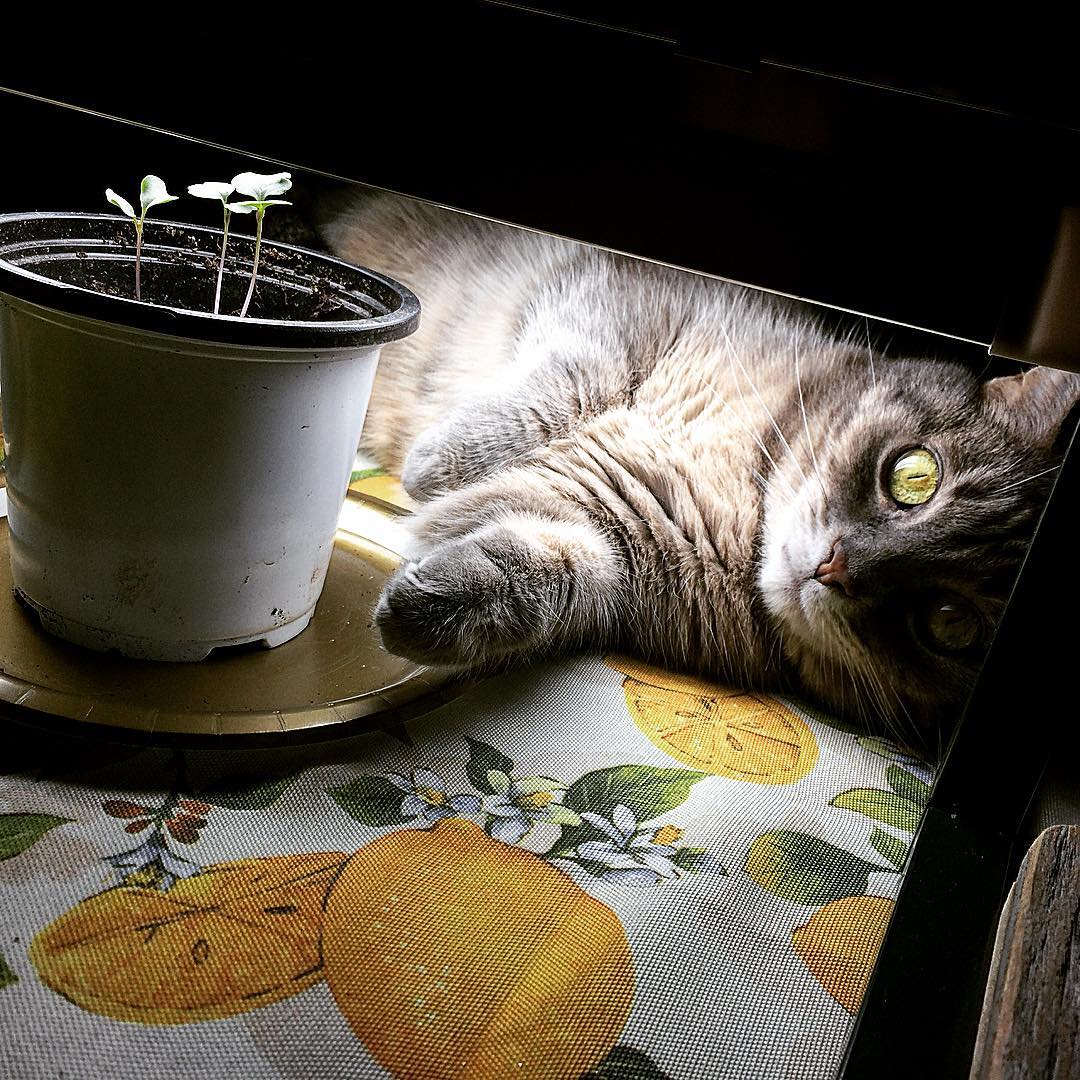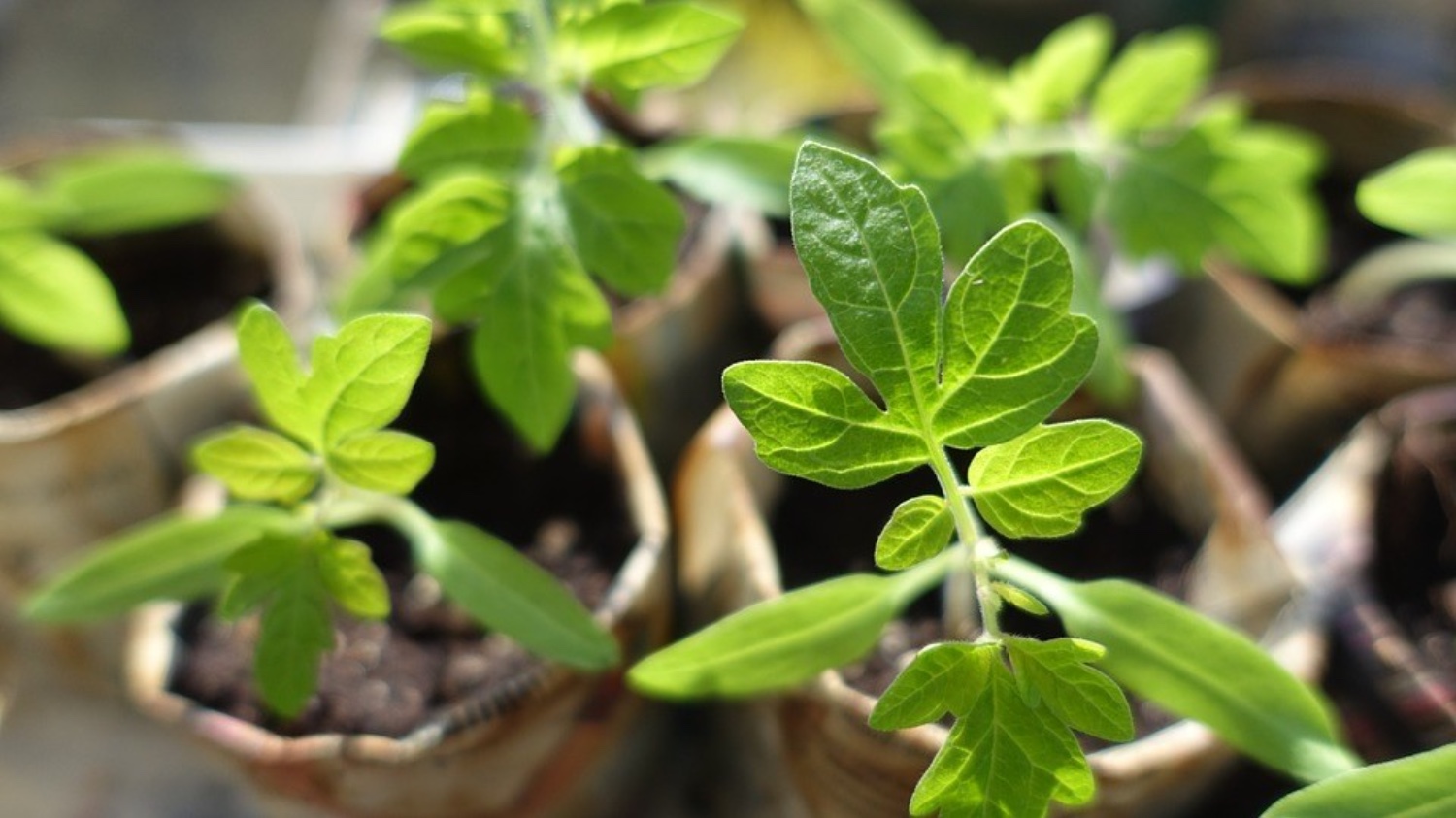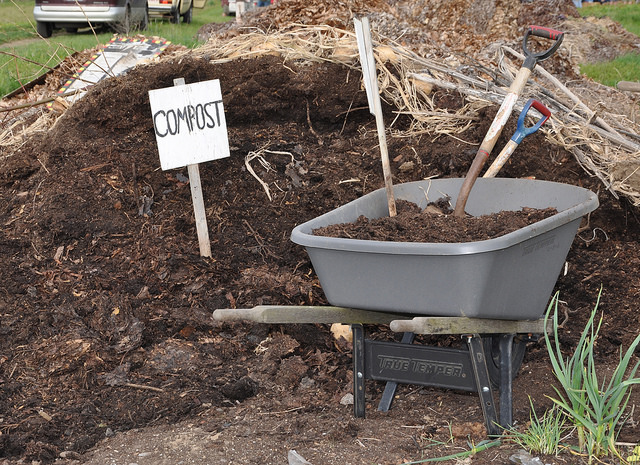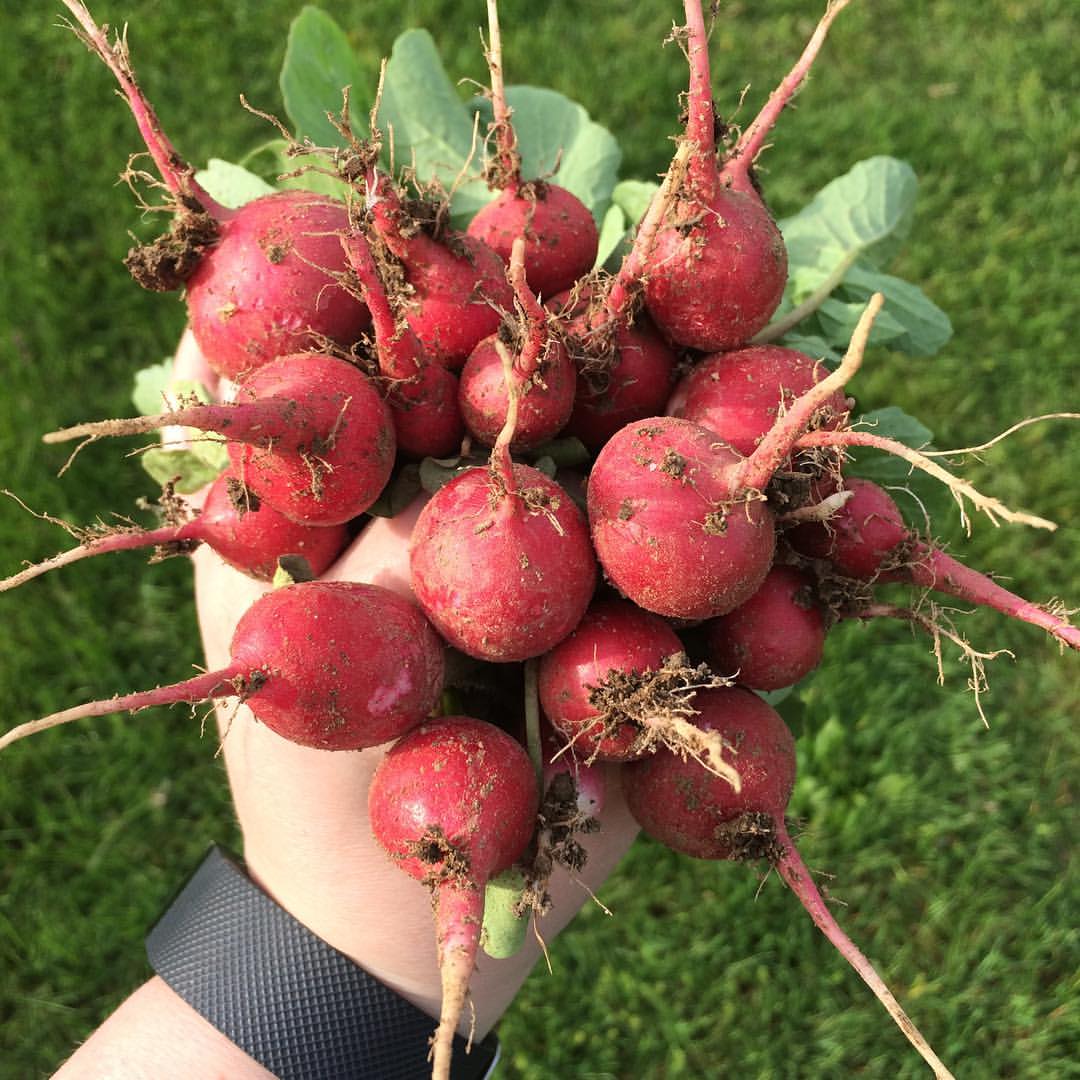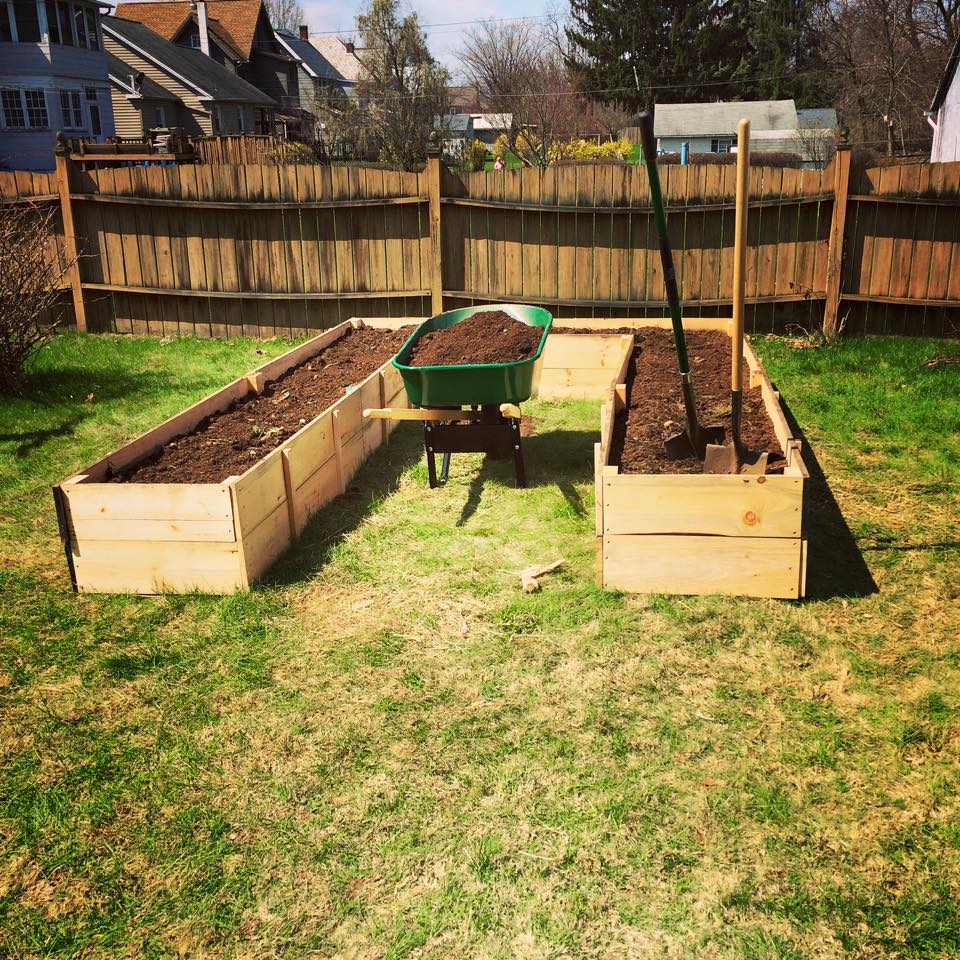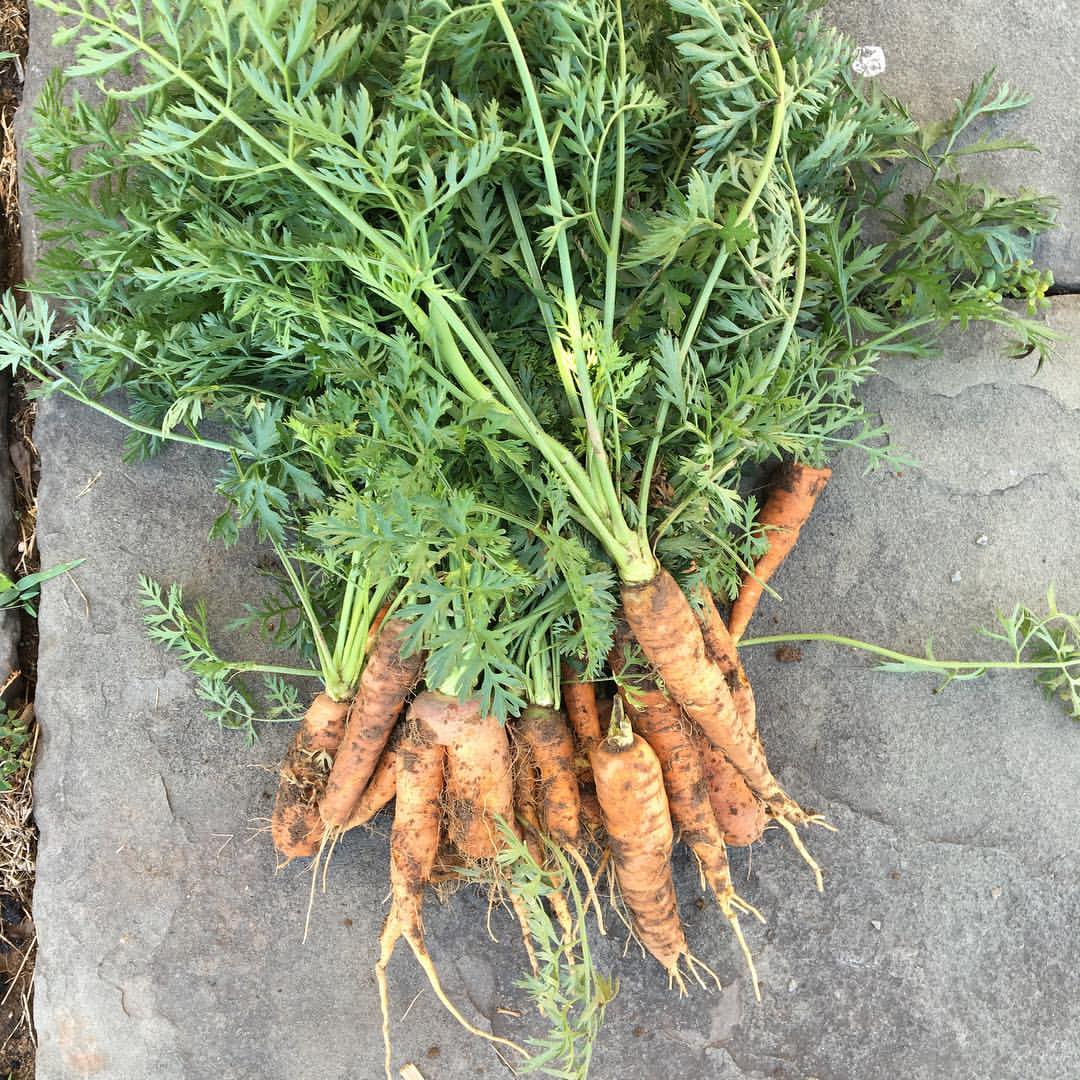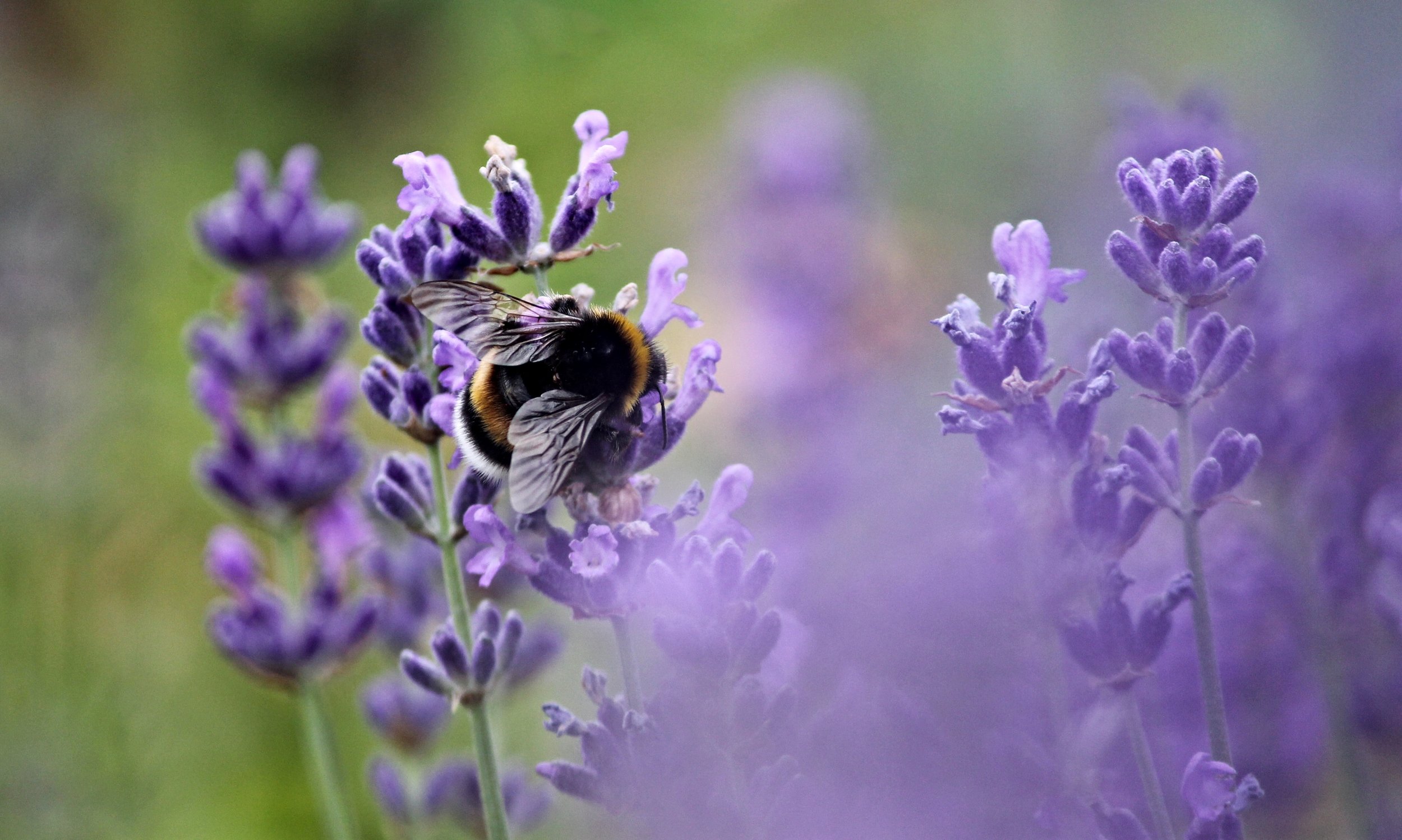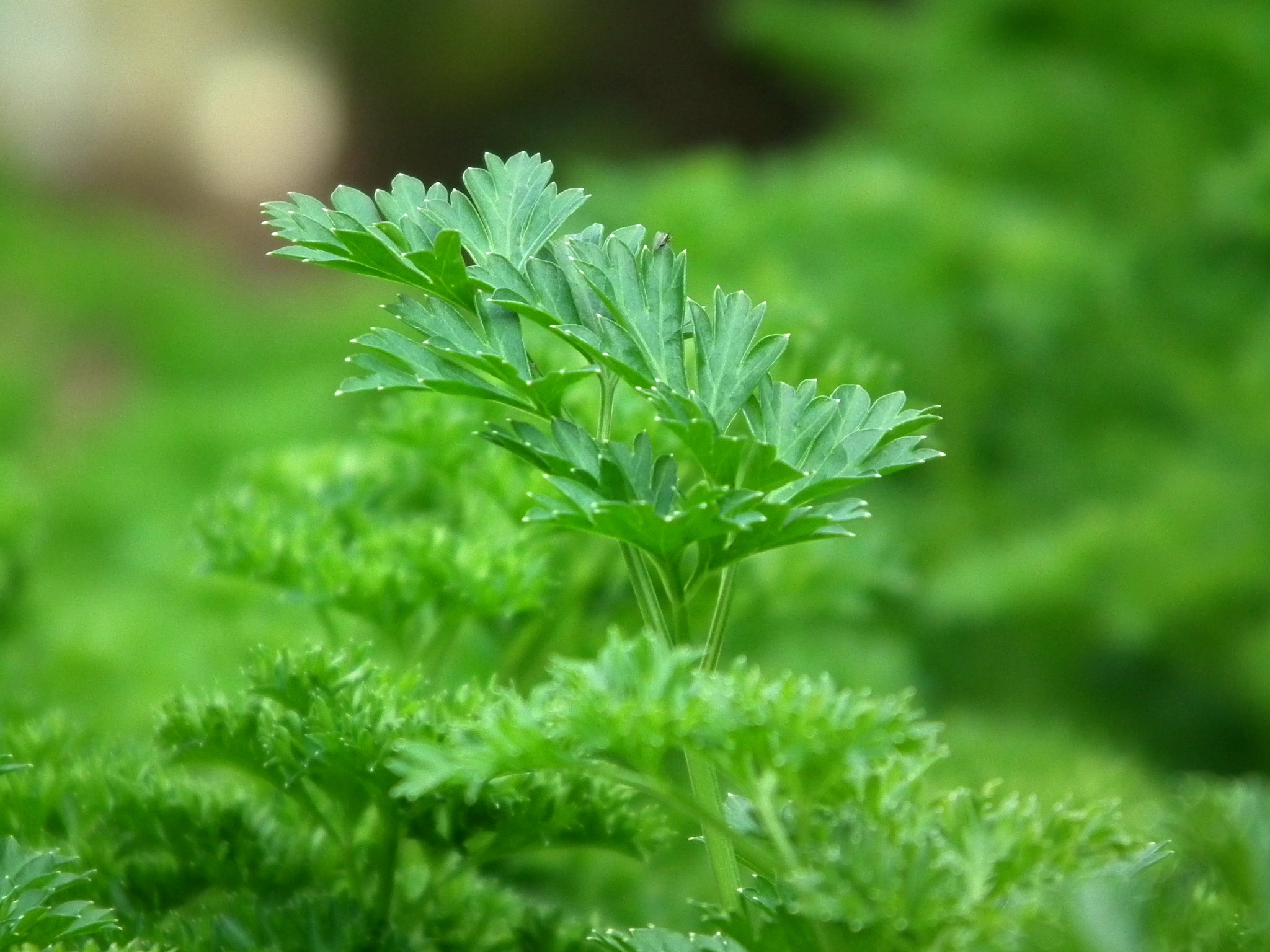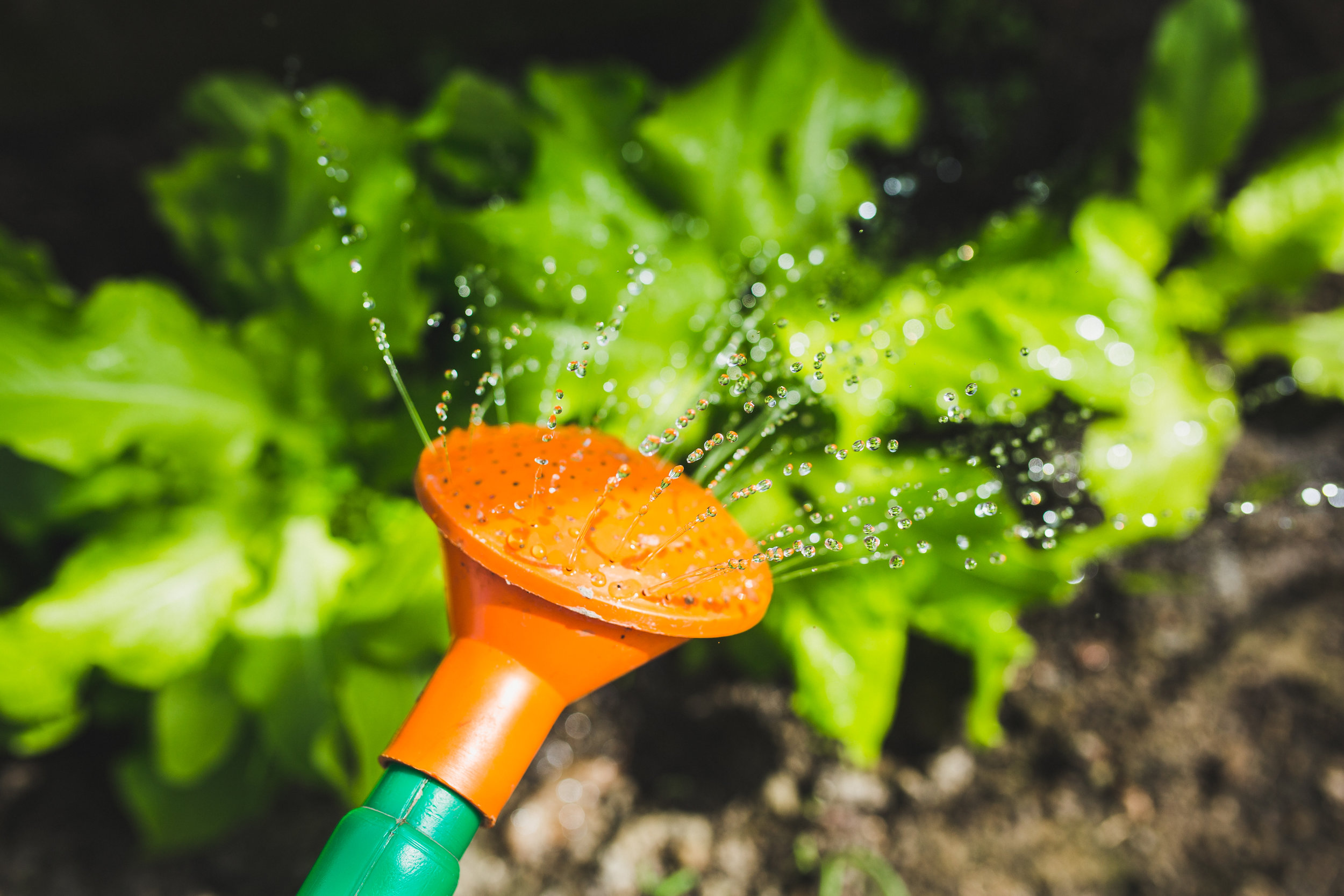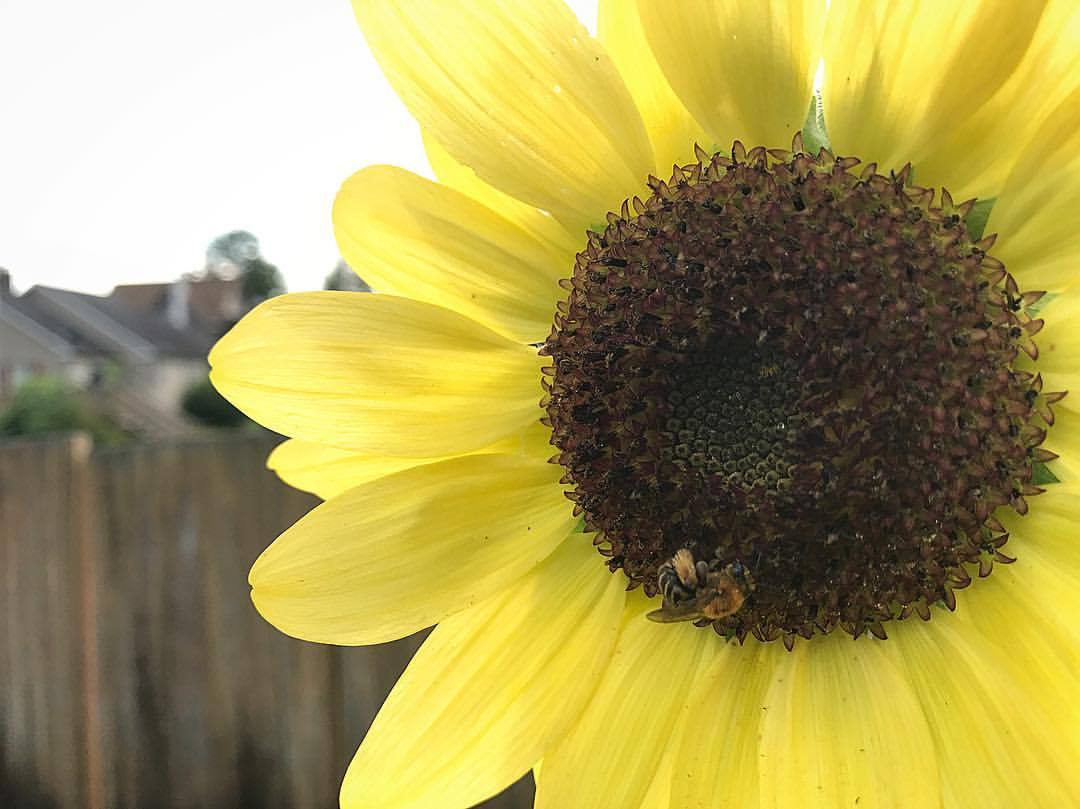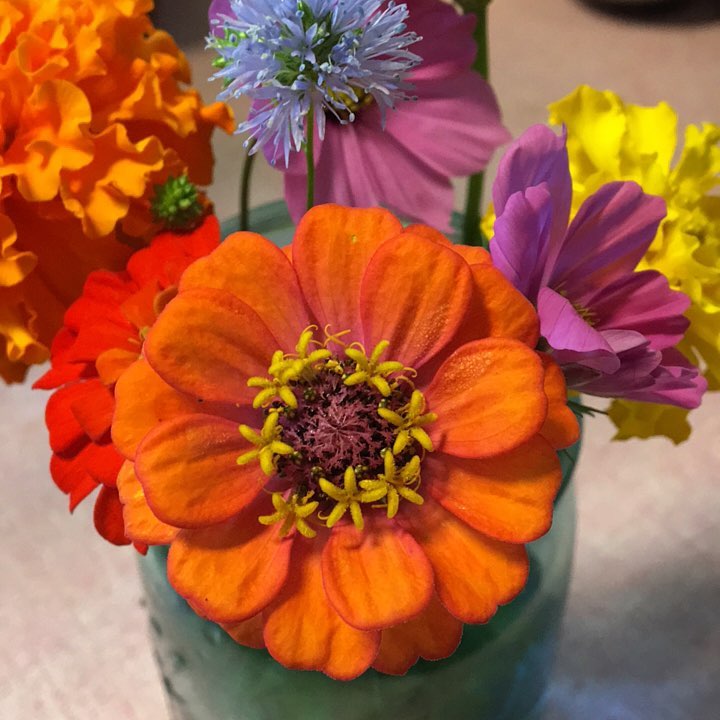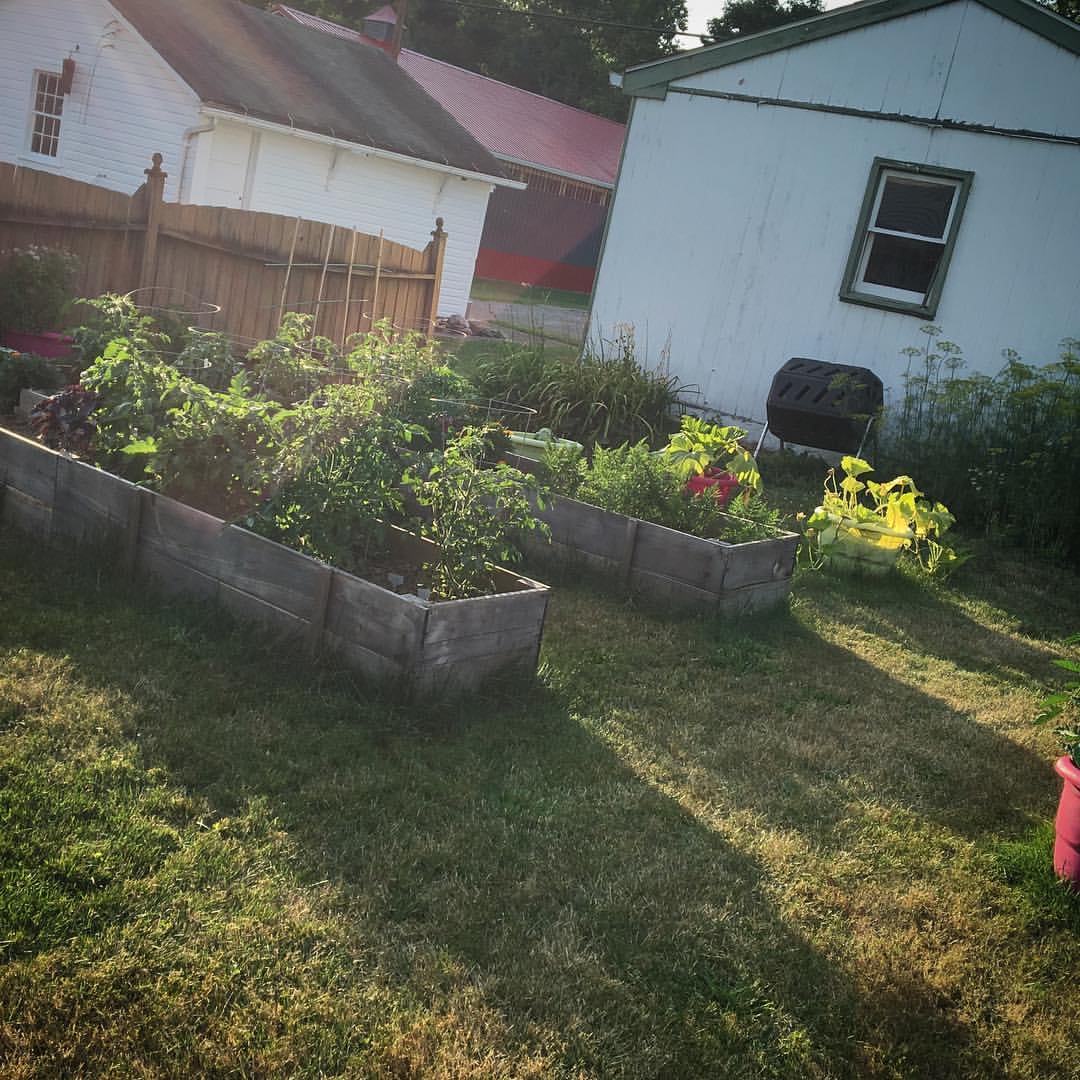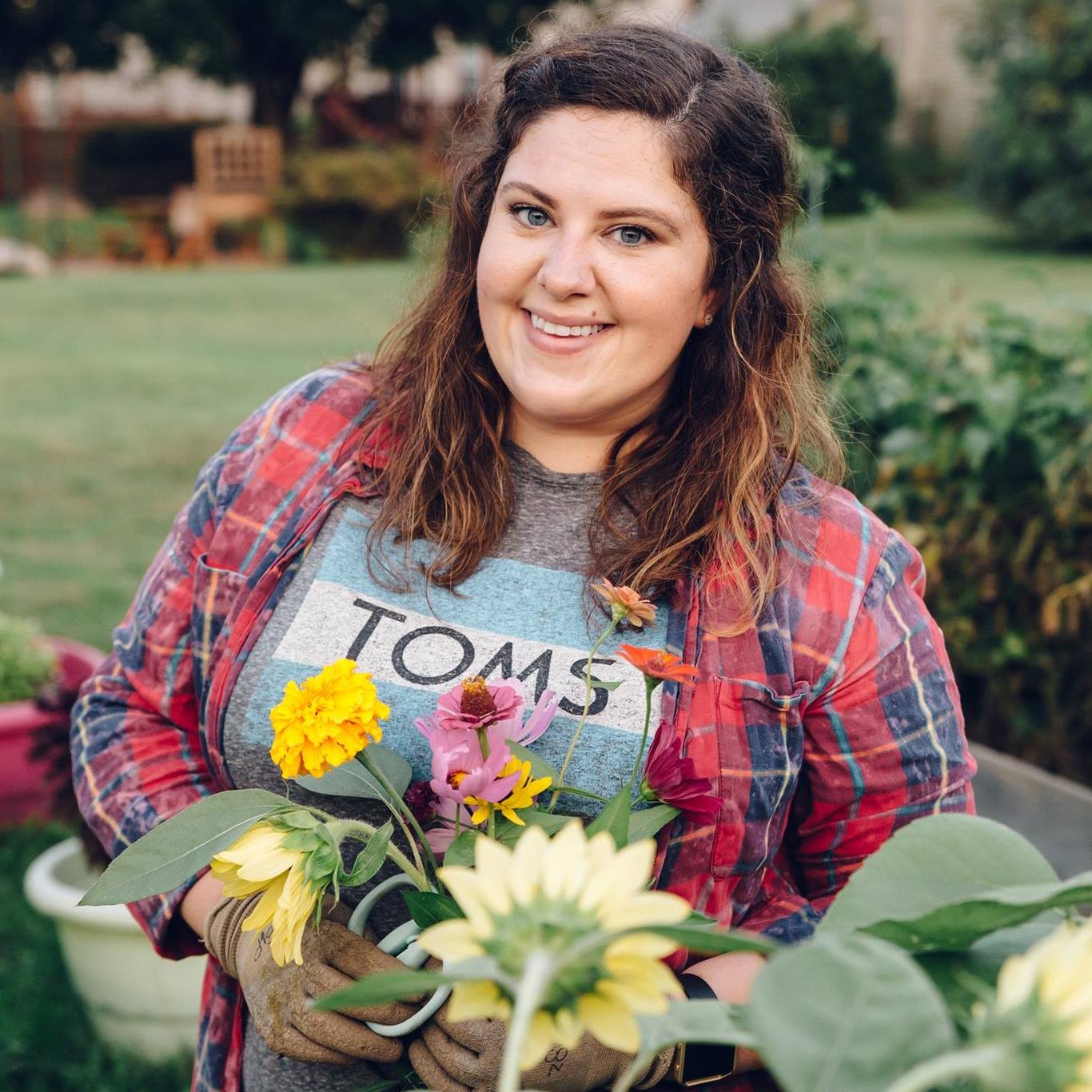Five Things to Put in Your First Garden
Up the road a bit, maybe a quarter of a mile from the home I grew up in, my grandparents raised white-faced Herefords. The big white farmhouse overlooked the street, the barn and was in the perfect location to watch any sunset or rolling thunderstorm. I especially loved going out to help Grandpa Boz feed the cows in the winter months. The reds and blacks of their fur was so bright that they looked like a painting of a Sedona mountainside.
I've seen both, but if you haven't here is something to help you visualize:
Each Spring we’d find ourselves, walking-sticks in hand, moseying through the pastures trying to locate the newest calf. Grandpa Boz taught me to keep an eye out for the afterbirth (kind of gross, I know, but science!), as it was a good indication that they were nearby and to take caution as we didn’t want to upset the new mama. But it was what Gram and I did each year that really set my heart ablaze - planning the garden!
Behind their house and along the edge of what used to be an apple orchard, was a large garden plot. It was so big that, rather than rototill it, Grandpa Boz would hook up a huge tillermajig (because who knows what it was called?) to the Alice Chalmers and dig it up that way. We’d plan out what we were going to plant that season and start some seeds indoors. I fondly remember finding the little seedling pots living on window sills throughout the house or in large crates near the windows of the front porch.
One thing I loved of about Gram’s way of gardening, was that she kept it simple. I think this had a lot to do with the fact that she grew up on a beet farm in rural Colorado during the early to mid-1900s. They had no choice but to keep it simple - simple layout, simple crops and simple ways to help them grow. I think it also helped that she worked in a greenhouse for many years, as well. For me, simplicity is the key to gardening.
And so begins my sage advice (garden joke, right there!) on what five things all beginner gardeners should put in their first garden:
1. Compost - Whether you are putting in an in-ground garden, starting out with raised beds, or even gunning for patio style planters, compost is essential to getting your garden off to a good start. I’m hoping to do another blog on composting, but for now, I just want to give you a brief rundown of why compost is so important.
Compost augments the soil in a few ways. It enhances the entire structure of the soil in that it adds texture, allowing for better airflow and water flow. Compost also adds to the nutritional integrity of your soil. This not only aids in healthy growth of plants, but it also helps with hindering disease.
It may seem crazy, but your garden soil is similar to your body. If you put good things into it, the healthier it will become and the stronger the outputs will be. I recommend researching composting a bit before you get started. Living in town, after doing a lot of my own research, I landed on a tumbler composter. It fits well in our yard, turns out awesome compost and is super easy to use.
2. Vegetables you’ll actually eat - This may seem obvious, but I’ve fallen victim to being overzealous in the garden. It’s easy to get excited about being able to grow new things and before you know it, you end up being overwhelmed and wasteful - two very bad states to be in.
Take time to think about what your family likes to eat and make a list. Review the list and start perusing the web or seed catalogs to see the differences in variety, how much space you’ll need for what you’d like to plant, how much each plant is likely to produce, etc. Once you have that figured out, you can start to plan placement, spacing, quantity, etc.
We put in our first raised bed garden two seasons ago. It fits nicely in our yard and allows for other plants to be grown in containers in the surrounding space. When I plan what to grow, I think about what things we eat during the summer. We use the grill often, so I grow things intentionally for salads, slaws and so forth. Because I love tomatoes and know I’m going to freeze or can, I plan for plenty of space for several plants and varieties.
Heirloom Tip: Think about what other people usually grow when you plan your own garden. For example, I purposely don’t grow zucchini or yellow squash because it’s guaranteed that someone in my family or at work will be bringing them in by the truckload. Because this is guaranteed to happen, I find that I’d rather use that space for other stuff, maybe a new carrot variety or a vegetable I’ve never grown before.
Just keep in mind, if you do go overboard and grow too much, you can always preserve or share the wealth. Canning and freezing help you enjoy the fruits of your labor all winter long. You can always share with friends, family, coworkers, or even contact your local shelters and food banks to see if they accept donations.
3. Herbs you’ll actually eat - This works the same way the vegetables do. Don’t plant three cilantro plants if you’re the only person that likes it. I usually grow the staples and one or two plants of each.
You’ll always find flat leaf parsley, cilantro, dill, basil, mint, and lavender in my garden. These are all things that can be used in summer recipes. I use them for things like salads, salsa, bruschetta, pickles and even cocktails!
These can also be preserved and used year round. I’ve been pretty lackadaisical about preserving my herbs in past years, but this year it’s all going to change. My mother-in-law gave us a dehydrator for Christmas. I have already been dreaming about all of the things I’ll be able to do with it! I’ll keep you posted on how things go.
4. Mulch - You might think I’m nuts here, but putting mulch in my garden was the best decision I’ve ever made. It cuts back on the time you have to spend weeding, it helps keep moisture in after watering, and when you use organic mulch, which will break down over time, it adds nutrients to your soil. Not to mention, it seriously helps your garden be Instagrammable (super important, I know!).
When mulching your garden, where you are growing your food, the mulch you use is beyond important. You can use leaves, grass clippings or my favorite, natural wood chips. Whatever you use, do not use anything that has been dyed, sprayed with pesticides or other chemicals. Just remember, you are what you eat. I like to think it works the same way with what our food eats!
5. Flowers - Yes, that’s right, beautiful, bright, pleasing-to-your-sniffer flowers! Flowers should be a requirement in every garden. Flowers attract pollinators, which is great because, if you think about it, some vegetable plants don’t have huge in-your-face flowers that our little pollinator friends can easily locate.
They also can deter pests, so it’s basically like Mother Nature’s pesticide au naturale. In my garden, I interplant Marigolds throughout the box garden and then have two wildflower beds nearby. I made sure that there were sunflowers as they help attract both the birds and the bees (cue Circle of Life from The Lion King). I must admit that because of the wildflower beds, this past growing season I had fewer garden pests, more pollinators, and fresh cut flowers on my table all summer long.
Bonus Heirloom Tip - Earthworms! The work they do with their bodies and their poop is extraordinary. As they move throughout the soil, it makes sense that the tunnels they create would help assist with soil structure and that their castings provide organic fertilizer that is rich in nutrients. Every single time I find an earthworm on the sidewalk or in the driveway, I sweep it off its feet (does this work here?) and run it to the garden. If you have kiddos, this would be a super fun activity to do after a rainstorm some balmy summer evening.
When I was little, my sister told me that I was found on the front doorstep. My mom, coming in for the save like all mothers do, assured me that I was found in the cabbage patch. I suspected they were both telling me a tall tale, but Mom’s sounded so magical that it had to be real. Either way, I grew up in the garden and thank Goodness for that!
The garden is where I shine and, make no mistake, you can too! Take your time, do your research and don’t be afraid to try new things. Keep it simple and you’ll have fresh produce to enjoy all season long.



